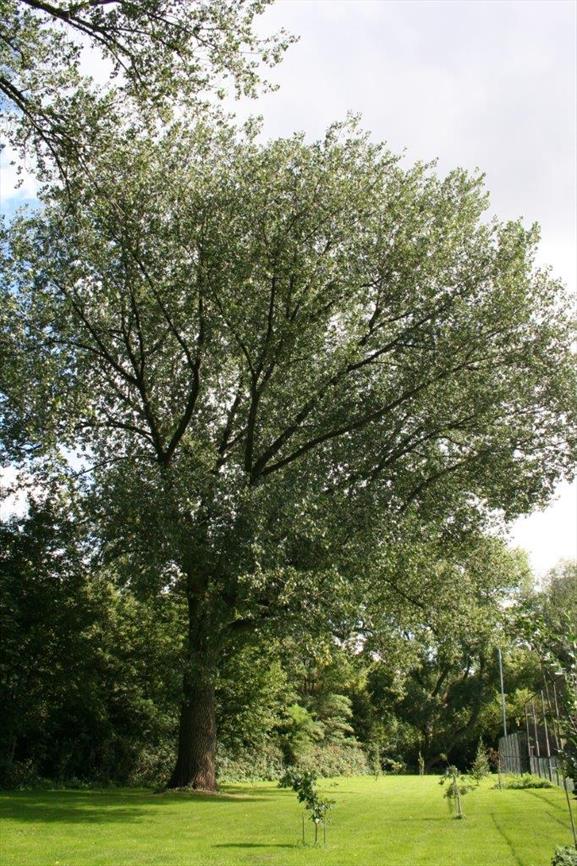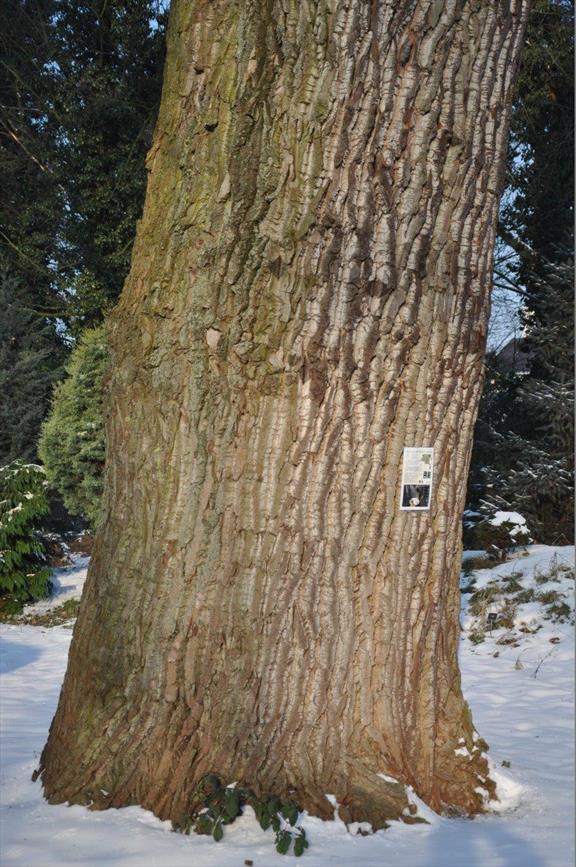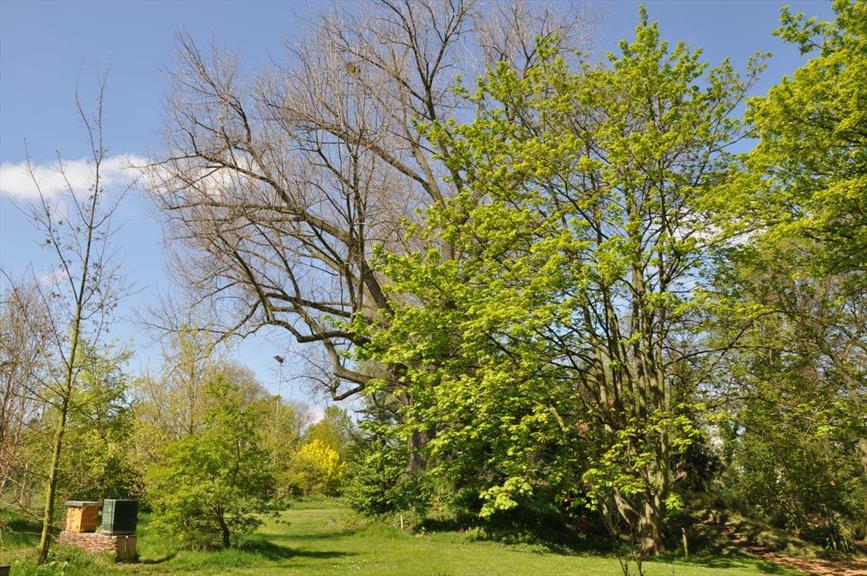Black Italian-poplar
Populus × canadensis 'Serotina'
Willow family (Salicaceae)
Thirty meter high hybrid
The Carolina poplar is a hybrid: a cross between the black poplar (Populus nigra), which grows wild along the Dutch rivers, and the American necklace poplar (Populus deltoides). The tree can reach over 30 m in height and has a broad, loose crown. This cross originated in France around 1750 and its vernacular name (Canadian poplar in Dutch and Carolina poplar in English) is therefore confusing. Carolina poplars are, like the balsam poplar (Populus balsamifera), widely planted because the wood was used for making clogs and matchsticks.
Carolina poplar and its relatives are pollinated by the wind. The seeds with their cotton-like strands are released when the fruit capsules split open – they may be so abundant that it can give the impression of snow lying under the trees.
Read more.... »Themes
Crown jewel in the Trompenburg Gardens & Arboretum.
The leaves unfold very late in the season ('serotinu' is Latin for 'late') and are a pale coppery-brown turning a light green with the advent of summer.
Poplar wood is relatively nonflammable and has been used for centuries for wooden trusses on farm buildings, doors or window frames, and the interior flooring and panelling of railway wagons. The wood is still being used in the clog industry. Special features include a light colour, easy to peel and dry and glue together. Today large quantities of poplar are used to manufacture pallets, crates and paper as well as furniture, matches, wooden kitchenware and toys.
In the past poplar leaves were used to make yellow and green dyes.
The Celts used the soft, yet durable, white wood to make their shields.
Details
| Description: | Tree, up to 10 - 20 m. |
|---|---|
| Distributions: | Only found in cultivation. |
| Habitat: | In gardens. |
| Year cycle: | Perennial (polycarpic decidous) |
| Hardiness: | 14 - 23 f (hardy - average winter) |
| Flowering period: | April - mei |
| Flower color: | Red |
| Notes on flowers: | Red male catkins. |
| Fruiting period: | September - oktober |
| At its best: | April - mei |


